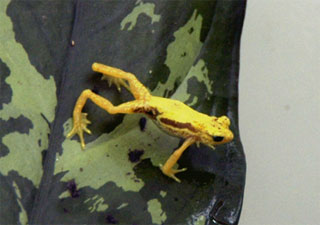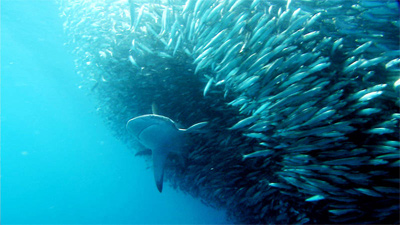New cures for human ailments under threat by global extinction crisis
New cures for human ailments under threat by global extinction crisis
Jeremy Hance, mongabay.com
April 24, 2008
|
|
In the film Medicine Man, a researcher in the Amazon discovers a cure for cancer in a rare ant. However, a logging company arrives at the wrong moment and, despite protestations from the main characters, the company destroys the tract of rainforest where the ant once survived.
A new book Sustaining Life: How Human Life Depends on Biodiversity proves that the 1992 film isn’t far off the track. The new book is the largest text yet regarding the possible cures that have already been lost—and those that we are losing due to the globe’s increasing loss of biodiversity. The book includes writing from over one-hundred scientists, including an introduction by E.O. Wilson and a prologue by Kofi Annan.
“While extinction is alarming in its own right, this book demonstrates that many species can help save human lives,” explains Jeffrey McNeely, co-author of the book. “If we needed more justification for action to conserve species, this book offers dozens of dramatic examples of both why and how citizens can act in ways that will conserve, rather than destroy, the species that enrich our lives.”

Once gathering by the thousands at the waterfalls of the Kihansi Gorge of Tanzania, the population of the Kihansi Spray Toad now stands at less than 200 individuals. The hasty construction of a desperately needed dam, built with good intentions by the World Bank, has relegated this species to the edge of existence. Now on brink of extinction, scientists are racing to study the amphibian for bioactive compounds. Photo by Rhett A. Butler. |
The gastric brooding frog of the Australian rainforest is just one example. Its unique style of parenting may have provided new cures for treating peptic ulcers in humans. The frog raised its young in its stomach; to survive the baby frogs produced a substance that halted acid and enzyme secretions, and stopped their mother from digesting the babies into her intestines. Unfortunately the two species of gastric brooding frog went extinct in the 1980s, and with them a possible cure.
The gastric brooding frog is only one example of many. Amphibians are among the world’s most endangered animals—they are dying off in large numbers due to habitat loss, pollutants, climate change, and chytrid fungus (a disease unique among amphibians). Yet amphibians are known among medical researchers for the unique secretions they produce. Researchers see possibilities in amphibians for better treatment of heart disease and high-blood pressure, more power pain-killers, new antibiotics, and even better ways of organ preservation before transplanting. Not only are amphibians threatened worldwide, there are probably innumerable amphibian species that have gone undiscovered by scientists—many of which may be gone before recorded and studied.
While bears are threatened by loss of habitat, they also face a large Asian market for their body parts as folk remedies for various ailments. Currently, six bears are threatened with extinction. Already studying bears has given humans rsodeoxycholic acid; it has a variety of uses, including prevent bile during pregnancy and dissolving gallstones. Yet scientists see even more potential in bear species: their ability to hibernate may help develop new treatments for osteoporosis, diabetes, and renal diseases.
 Photo Credit: Rob Stewart/Sharkwater. Image provided by Oceana. |
Sharks are also threatened globally, mostly due to by-catch and direct fishing of shark for their meat. Shark-fin soup is especially popular in Asia. Though they are one of the world’s oldest groups, inhabiting seas for over 400 million years, some shark species have declined up to 75 percent in just fifteen years. Yet sharks may hold the key to many medical cures. One substance produced by sharks called squalamine has shown promise for new antibiotics, as an appetite-suppressant, and an antitumor drug. Perhaps most importantly, though, sharks possess an adaptive immune system. “What potential these creatures may still hold to further our knowledge of immunity is being rapidly depleted with the mass slaughter of sharks and the endangerment of sharks worldwide,” writes the book’s authors.
Plants also hold a great possibility of cures for humanity. Yet plants have been less surveyed than animals, especially in plant-rich ecosystems like the Amazon, where thousands of species can inhabit a small area. The Gymnosperms plants include at least 1,000 species, though many are endangered. Gymnosperms are already responsible for some decongestants and the anti-cancer drug taxol. Researchers see more possibilities amid its species for treatments to Alzheimer’s, epilepsy, and depression, but only if the species avoid extinction.
The research in Sustaining Life: How Human Life Depends on Biodiversity, highlights just one important way in which the current crisis of mass-extinction will greatly harm the human race. The books many authors are eager to point out that the only method of further studying these treatments—and the countless unknown ones—is to stem the tide of biodiversity loss, conserving both species and ecosystems.